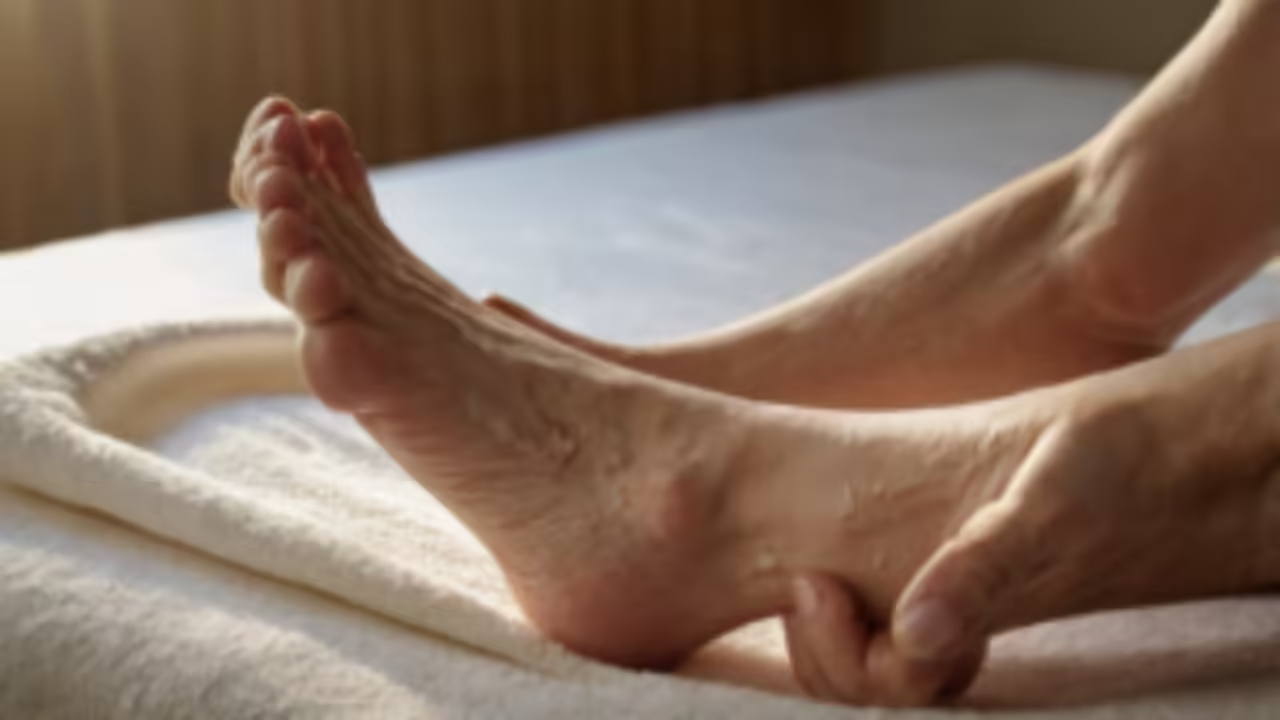Essential Daily Foot Care for Diabetics: Tips to Maintain Foot Health
Signs of Foot Issues in Diabetics
Foot issues are common among diabetics due to nerve damage and poor circulation in the feet. Individuals with diabetes must practice daily foot care to prevent complications. Monitoring for any changes in the feet is essential for maintaining good diabetic foot health.
Some signs of foot issues in diabetics include redness, swelling, sores that are slow to heal, and changes in skin color or temperature. These symptoms can indicate nerve damage or reduced blood flow to the feet. Regularly inspecting the feet as part of daily foot care for diabetics is crucial in catching potential issues early and seeking prompt medical attention when needed.
Importance of Regular Foot Inspections
Regular foot inspections are a crucial component of proper foot care for diabetics. These inspections help in early detection of any potential issues that may arise due to diabetes-related nerve damage or poor circulation. By incorporating foot inspections into their daily foot care routine, diabetics can actively monitor for signs of ulcers, blisters, or other injuries that may go unnoticed without thorough examination.
In addition to identifying potential problems early on, regular foot inspections also provide an opportunity for diabetics to practice preventive foot care measures. Simple foot care tips for diabetics, such as checking for redness, swelling, or cuts, can be easily integrated into the daily routine of inspecting the feet. By staying vigilant and proactive in their foot care, diabetics can help prevent complications and maintain healthy feet for the long term.
Choosing the Right Footwear for Diabetics
When it comes to diabetic foot care essentials, choosing the right footwear is crucial for maintaining foot health. Properly fitting shoes that provide adequate support and cushioning can help prevent complications such as ulcers and injuries. Diabetics should opt for shoes made from breathable materials to reduce the risk of irritation and ensure good air circulation around the feet.
Essential Diabetic Foot Care: Tips for Healthy Feet and Preventing Complications
Foot health management for diabetics also involves selecting footwear with roomy toe boxes to prevent rubbing and pressure points. Additionally, shoes with adjustable closures, such as velcro straps or laces, allow for a customized fit to accommodate any swelling or changes in foot size. It’s essential to inspect shoes regularly for signs of wear and tear, as damaged footwear can lead to blisters and foot ulcers.
Proper Cleaning and Moisturizing Techniques
Patients with diabetes must take good care of their feet. Proper diabetic foot hygiene involves using gentle cleansers and lukewarm water to wash your feet daily. Avoid soaking your feet for extended periods as this can strip the skin of its natural oils, leading to dryness and potential cracks. After patting your feet dry with a soft towel, apply a moisturizer specifically formulated for diabetics to keep your skin hydrated and prevent complications.
When choosing foot care products for diabetics, opt for non-irritating, fragrance-free options to minimize the risk of skin irritation. Look for products that are designed to soften calluses and rough skin while maintaining the natural moisture balance of your feet. Regularly inspect your feet for any cuts, sores, or signs of infection, and seek medical attention promptly if you notice any concerning changes. By incorporating these proper cleaning and moisturizing techniques into your daily routine, you can help prevent diabetic foot-related complications and maintain the overall health of your feet.
Managing Blood Sugar Levels for Healthy Feet
Proper management of blood sugar levels is crucial for individuals with diabetes to prevent diabetic foot problems. High blood sugar levels can lead to nerve damage known as diabetic neuropathy in the feet, which can result in reduced sensation and poor circulation. Consistently monitoring and controlling blood sugar levels through diet, exercise, and medication can help minimize the risk of developing serious foot complications.
In addition to blood sugar control, practicing good diabetic neuropathy foot care is essential for maintaining healthy feet. This includes conducting regular foot inspections, keeping feet clean and moisturized, and wearing proper footwear that fits well and provides adequate support. By taking proactive measures to manage blood sugar levels and prioritize foot care, individuals with diabetes can reduce the likelihood of developing complications that may jeopardize their foot health.
Tips for Trimming Toenails Safely
When it comes to foot care treatment for diabetics, one crucial aspect is the safe trimming of toenails. Proper nail cutting is vital to prevent ingrown toenails and potential infections. In the diabetic foot care guide, it is recommended to cut toenails straight across without rounding the edges to reduce the risk of ingrown toenails. Additionally, it is essential to use nail clippers specifically designed for toenails and avoid cutting them too short to prevent injuries or infections.
Another tip for trimming toenails safely as part of diabetic foot care treatment is to avoid cutting the corners too deeply. Cutting the corners too close can result in painful ingrown toenails, which can be particularly problematic for individuals with diabetes due to their compromised immune system and slower healing process. To maintain healthy feet, trim nails regularly and inspect them for any signs of infections, ingrown nails, or abnormalities that may require medical attention.
Preventing and Treating Calluses and Corns
Calluses and corns are common foot problems that can cause discomfort and pain for individuals, especially diabetics. Calluses are areas of thickened skin that form due to repetitive friction or pressure, while corns are smaller and usually develop on the toes. These conditions can lead to complications if not properly managed, making prevention and treatment essential aspects of diabetic foot care.
To prevent calluses and corns, it is crucial to wear proper footwear that fits well and provides adequate support. Shoes that are too tight or loose can increase friction and pressure on certain areas of the feet, leading to the development of these skin issues. Additionally, regularly moisturizing the feet can help keep the skin soft and prevent the formation of thickened areas. In cases where calluses or corns have already developed, it is important to consult a healthcare provider for appropriate treatment and to avoid self-removal methods that can cause further damage.
The Importance of Regular Podiatrist Visits
Regular podiatrist visits are essential for individuals with diabetes to maintain good foot health. These specialized doctors can help in the early detection and management of any foot issues that may arise due to diabetes. By conducting thorough examinations and providing individualized care, podiatrists play a crucial role in preventing serious complications such as ulcers and infections in diabetic patients.
During these visits, podiatrists can assess the overall condition of the feet, check for signs of nerve damage or poor circulation, and guide proper foot care techniques. They can also offer advice on selecting appropriate footwear and discuss strategies for managing blood sugar levels to promote optimal foot health. With regular podiatrist visits, diabetics can proactively address any potential problems and work towards keeping their feet healthy and complication-free.
Exercises to Improve Circulation in Feet
Physical activity is crucial in enhancing circulation throughout the body, including the feet. Engaging in exercises that promote blood flow can help diabetics maintain optimal foot health. Simple activities like walking, cycling, and swimming are excellent for boosting circulation in the lower limbs while also providing overall cardiovascular benefits. These exercises can be easily incorporated into daily routines to support healthy blood flow to the feet.
Additionally, stretching exercises can aid in promoting flexibility and circulation in the feet. Activities such as toe curls, ankle circles, and calf stretches can help improve blood circulation and prevent stiffness in the feet. Regularly performing these gentle stretches can also contribute to better mobility and reduce the risk of foot complications in diabetics. By incorporating these exercises into a daily regimen, individuals can enhance circulation in their feet and promote overall foot health.
Emergency Care for Foot Injuries
In cases of foot injuries among diabetics, immediate attention is crucial to prevent complications. If you experience a cut, wound, or any injury to your foot, it is essential to clean the affected area with mild soap and water, apply an antiseptic, and cover with a sterile bandage. However, avoid using direct pressure or tight bandages that may restrict blood flow to the injury site. If the injury does not show signs of healing or if you notice any signs of infection such as redness, swelling, warmth, or drainage, seek medical help promptly to prevent further complications such as diabetic foot ulcers or infections.
Moreover, for more severe foot injuries such as fractures or deep wounds, do not attempt to self-treat or ignore the symptoms. Instead, seek immediate medical attention from a healthcare professional or visit the emergency room. Diabetics are at a higher risk of developing serious complications from foot injuries due to poor circulation and nerve damage, so prompt intervention is crucial to prevent further damage or infection. Remember that early detection and proper care are key to maintaining healthy feet and preventing potential complications associated with foot injuries in diabetics.
FAQs About Daily Foot Care for Diabetics
What are some signs of foot issues that diabetics should watch out for?
Some signs of foot issues in diabetics include redness, swelling, numbness, tingling, pain, cuts or sores that are slow to heal, and changes in nail color or thickness.
Why is it important for diabetics to regularly inspect their feet?
Regular foot inspections can help diabetics catch any issues early on and prevent complications such as infections or ulcers.
How should diabetics choose the right footwear?
Diabetics should choose footwear that fits well, provides support, and protects the feet from injury. They should avoid shoes that are too tight or have seams that could rub against the skin.
What are some proper cleaning and moisturizing techniques for diabetic feet?
Diabetics should wash their feet daily with mild soap and lukewarm water, pat them dry gently, and moisturize with lotion to prevent dry skin and cracking.
How can diabetics manage their blood sugar levels for healthy feet?
Diabetics can manage their blood sugar levels by following a healthy diet, exercising regularly, taking medication as prescribed, and monitoring their blood sugar levels regularly.
What are some tips for trimming toenails safely?
Diabetics should trim their toenails straight across, avoid cutting them too short, and use a nail file to smooth any rough edges to prevent ingrown toenails.
How can diabetics prevent and treat calluses and corns on their feet?
Diabetics can prevent calluses and corns by wearing properly fitting shoes and cushioned insoles. They can treat them by gently filing them down with a pumice stone.
Why is it important for diabetics to have regular visits to a podiatrist?
Regular visits to a podiatrist can help diabetics catch any foot issues early on, receive proper treatment, and prevent complications.
What are some exercises that can help improve circulation in the feet?
Some exercises that can help improve foot circulation include ankle circles, toe curls, heel raises, and walking or swimming.

